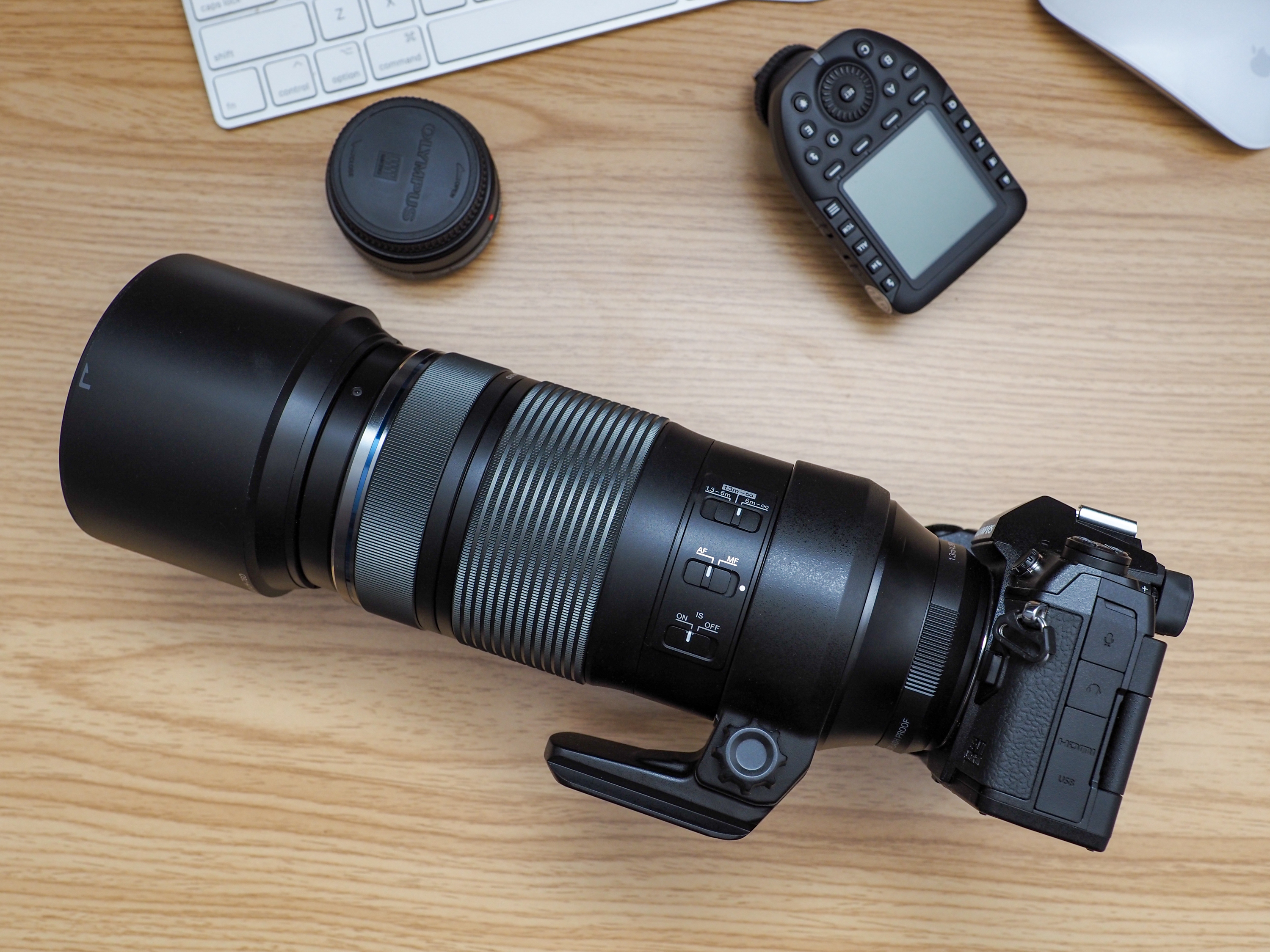Last Updated on 08/04/2020 by Mark Beckenbach
Many photographers have been waiting a long time for the Olympus 100-400mm f5-6.3, and so far, it seems like the wait has been worth it.
Fans of Olympus have been waiting a long time for the Olympus 100-400mm f5-6.3 IS, and we’re pleased to say that today, Olympus has officially unveiled their new tele to super-telephoto lens that will appeal to wildlife and nature photographers the world over. Instead of just offering a boring news post, we have instead put together a first impressions post that will give you a glimpse of the new glass. We have had the lens on hand for a short while, and we have been putting it to work, so pull up a chair and see what we have found out so far (yes, there are sample images) after the break.
Note: This is not a full review of the Olympus 100-400mm f5-6.3 IS. This post contains our first impressions of the lens after a short period of use, and much more testing needs to be done before we can publish a full review.
Table of Contents
Tech Specs
All technical specifications have been taken directly from information that Olympus has provided us with.
- Focal Length: 100-400mm35mm Equivalent Focal Length200-800mm
- Lens Construction: 21 elements in 15 groups (4 ED lenses, 2 Super HR lenses, 2 HR lenses)
- Weatherproofing: IEC Standard publication 60529 IPX1 (applies when the lens is used with Olympus splashproof Body) / Dustproof construction
- Focusing System: High-speed Imager AF (MSC)
- The angle of View: 12 degrees (Wide) – 3.1 degrees (Tele)
- Closest Focusing Distance: 1.3m (4.2ft at all focal lengths)
- Maximum Image Magnification: 0.09x (wide)/ 0.29x(tele)
- Equivalent Max Image Magnification: 0.17x (wide)/ 0.57x (tele)
- Minimum Field Size: 202.4×152.1mm (Wide)/ 60.3×45.3mm (Tele)
- Number of Blades: 9 (Circular aperture diaphragm)
- Maximum Aperture: F5
- Minimum Aperture: F22
- Lens IS Mechanism: VCM (voice coil motor)
- IS Performance: Lens IS 3 steps** According to CIPA standards. With yaw and pitch applied and focal length set to 400mm
- Filter SizeDiameter: 72 mm
- Dimensions: 86.4×205.7mm
- Weight: 1,120g / 2.46lbs (without Tripod Adapter, Lens Cap, Lens Rear Cap, and Lens Hood)
Gear Used
We have tested the Olympus 100-400mm f5-6.3 IS with the Olympus E-M1 III and the MC-20 2x teleconverter.
Ergonomics
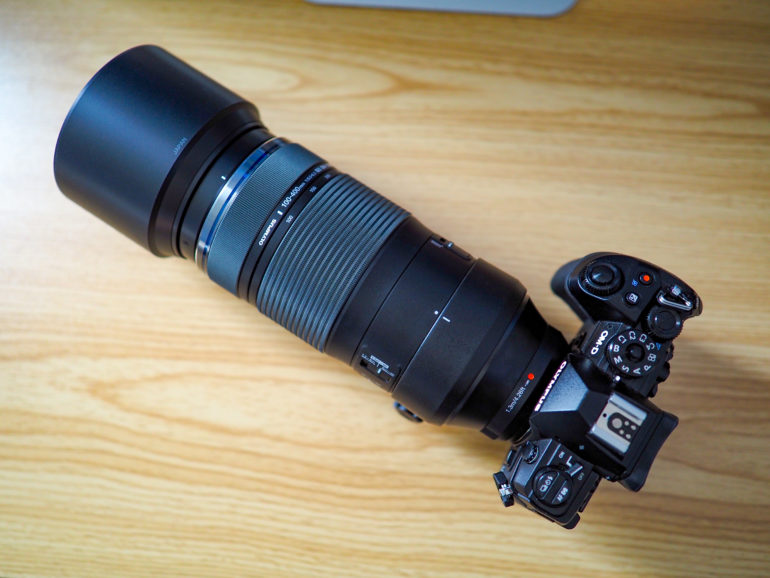
The first thing any seasoned Micro Four Thirds user is going to notice is the size of the Olympus 100-400mm f5-6.3. For what the lens is, it’s actually on the small side when compared to Full Frame equivalents, but as far as M4/3 lenses go, this is on the upper end of things when it comes to size and weight. The Olympus 100-400mm is roughly the same size as the Olympus 300mm f4 Pro (approximately 11-inches long with the hood attached, 8-inches long without) when not zoomed out to 400mm, and it weighs 2.46lbs (compared to 2.8lbs of the 300mm f4 Pro). In the image above, you can see the large textured zoom ring and the smaller manual focus ring.
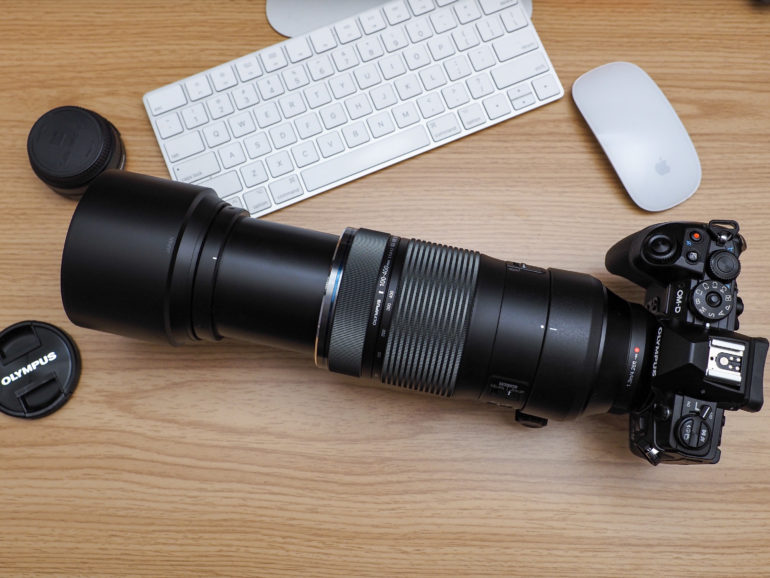
When extended, the Olympus 100-400mm f5-6.3 IS is significantly longer than the Olympus 300mm f4 Pro at about 10.5 inches (13.25-inches with the hood attached). Still, the lens doesn’t become unwieldy at all, and it feels just fine when attached to my Olympus E-M1 III.
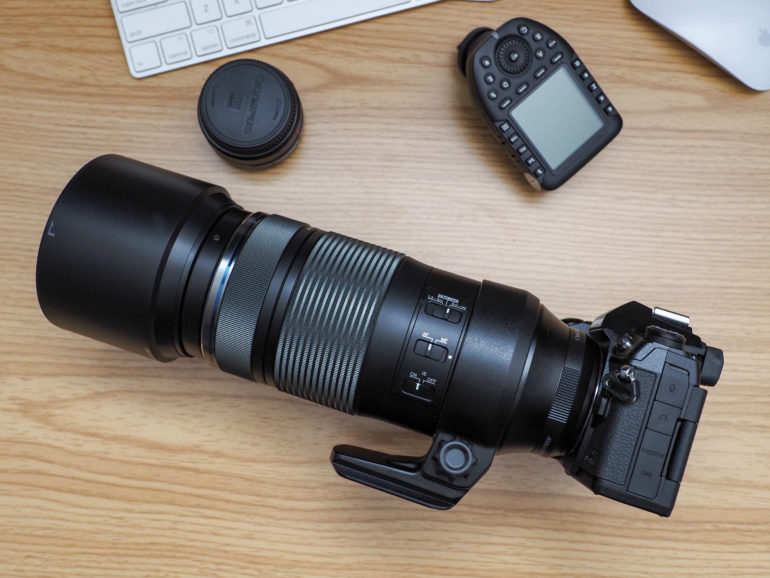
The Olympus 100-400mm f5.6.3 IS comes with a tripod ring, which is a nice bonus, but it is a little on the short and stubby size. Still, it offers an excellent point of contact when you are holding the lens, and the Arca Swiss plate makes it easy to attach to your tripod’s ball head.
On the left-hand side of the lens, you’re going to find the image stabilization switch, a manual and autofocus selector switch, and a focus limiter switch. The Olympus 100-400mm f5-6.3 IS is not an Olympus Pro lens, so there is no manual focus clutch. The exclusion of the clutch mechanism is bound to frustrate many, but the MF/AF control does make it easy to switch between the two modes. The right-hand side of the lens houses a lock switch, which only locks the glass into position when at 100mm.
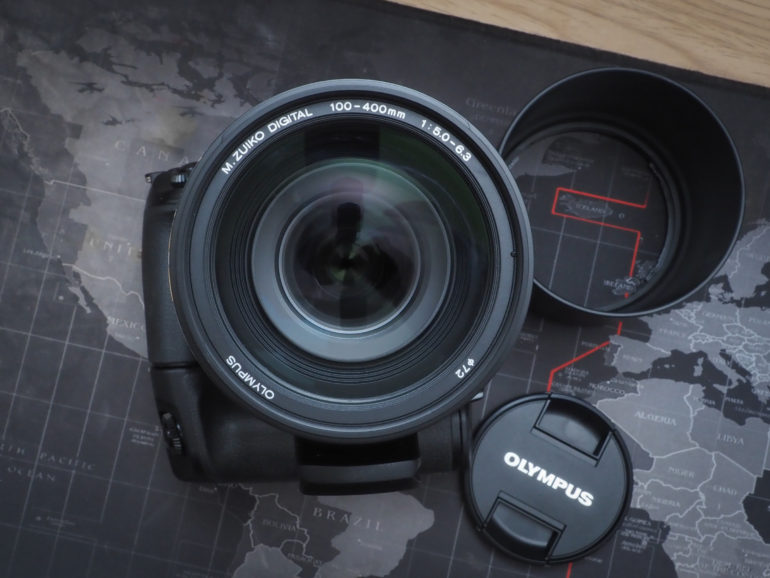
Around the front, you’ll see the front element. This lens has a filter thread size of 72mm, so prepare accordingly if you like to use filters. Overall, from an ergonomics standpoint, the Olympus 100-400mm f5-6.3 has been nice to use so far. You certainly notice the weight of the lens, but it feels pretty good in the hand.
Build Quality
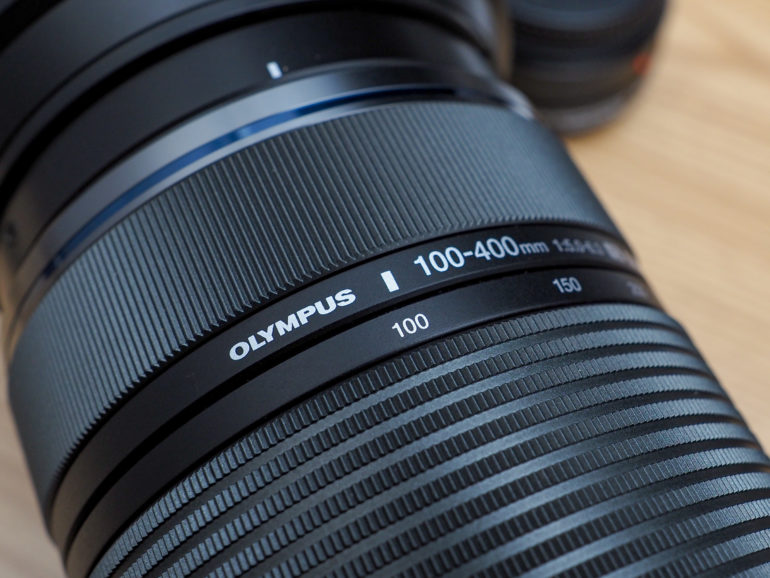
As mentioned above, the Olympus 100-400mm f5-6.3 IS is not one of Olympus’s Pro lenses, and that means this lens is made entirely out of plastic. This is not a bad thing; the Olympus 100-400mm feels solid. The plastic feels like a high-quality composite that is smooth to the touch. If I had one complaint so far, it would be about the texture of the zoom ring. While the grip certainly offers traction, the small bumps feel incredibly rough. It feels like I could smooth a piece of wood with it. Aside from the texture of the grip, both the zoom ring and the manual focus rings are smooth when turning and offer just the right amount of resistance.
Olympus states that this lens has an IPX1 rating when it comes to weather sealing, which is the same weather sealing rating given to the Olympus E-M1X and E-M1 III, so this lens should be able to withstand just about anything Mother Nature can throw at it. I have not had a chance to test the weather sealing yet, but it will be put to the test over the coming weeks, so stay tuned to find out how it stands up to some abuse. My first impressions of the build quality are great, though. The lens feels well built, solid if you like, and nothing sticks out to me to suggest it won’t survive being torture tested in the field while grabbing wildlife shots.
“Olympus states that this lens has an IPX1 rating when it comes to weather sealing, which is the same weather sealing rating given to the Olympus E-M1X and E-M1 III, so this lens should be able to withstand just about anything Mother Nature can throw at it.”
Ease of Use

Super telephoto lenses by nature aren’t the easiest lenses to use, and any flaws in your technique will be amplified by lenses like this. Still, the Olympus 100-400mm f5-6.3, with its image stabilization, is quite easy to use. Attach it, acquire focus, and off to the races you go. Handholding this lens from 100mm to 400mm (or 200mm to 800mm) is easy to do, and you will be able to nail focus consistently. Even when I attached my MC-20 2x teleconverter, I was able to handhold this lens at 1600mm equivalent focal lengths. Just check out the image above. The settings were 1600mm, ISO 200, f13 with a shutter speed of 1/125th! Who cares about reciprocal rules when you have IS as good as this to play with!
All the controls on the lens are positioned well and are easy to use. As mentioned earlier, the zoom and focus rings offer a nice amount of resistance, and the tripod collar means you can attach the Olympus 100-400mm to a tripod quickly. I still need to do more testing, but so far, the lens is proving to be quite easy to use.
Autofocus

So far, autofocus performance has been pleasing. In great light, it is rapid, but I did notice a tiny little bit of hunting in lower light scenarios. As you can see above, I was able to capture hummingbirds in flight easily, and if there was ever a test to see if a lens can focus quickly, hummingbirds would be the prime test candidate. The lens has also been quiet during use so far. Just remember to set the focus limiter switch to match the distance you are shooting at, or you’re bound to miss shots as there is just so much glass to move around along the focal range. I need to test the lens in more situations before I can give a final verdict, but so far, the autofocus performance has been great.
Image Quality

So far, the Images that I have made with the Olympus 100-400mm f5-6.3 IS are very nice indeed. It’s going to take a lot more testing to get a really good feel for how the lens performs, but so far, so good. The colors rendered are very pleasing and have a natural feeling to them, and I have to say that I have not seen the slightest hint of chromatic aberration or fringing thus far. Below you’ll find a mix of unedited RAW, edited RAW, and straight out of camera JPEG files so that you can get a feel for how this lens performs. When we do our full review, we will give a more thorough breakdown of the performance, but for now, enjoy the images.






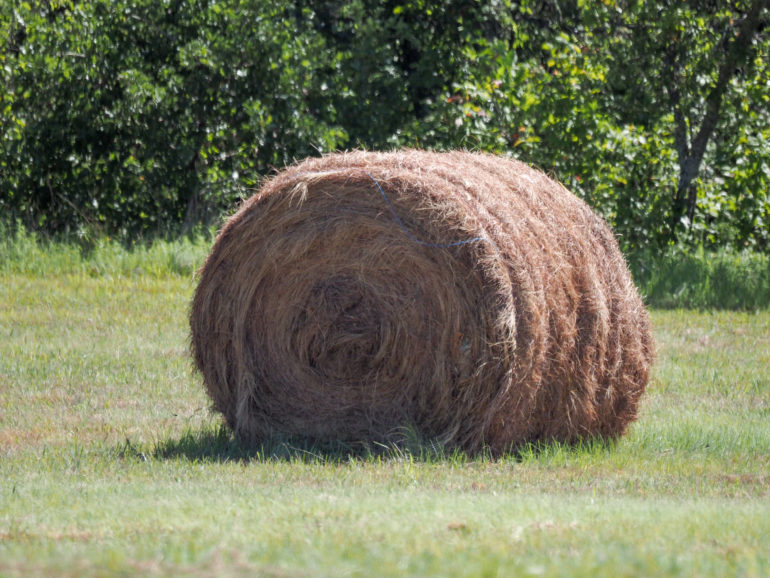






First Impressions

Olympus fans have waited a long time for this lens. Micro Four Thirds users have had the Panasonic 100-400mm f4-6.3 to play around with for a while, but with inconsistent performance on the Olympus side of things, this new offering from Olympus will be welcomed with open arms.
While it’s not designated as a Pro lens, this M.Zuiko branded Olympus 100-400 f5-6.3 IS has impressed during my short time with it so far. The lens feels nice in hand, and it features the same level of weather sealing as Olympus Pro lenses. The image stabilization works very well, images are sharp, I’ve not noticed any distortions or fringing, and it renders beautiful colors.
I am looking forward to putting this lens through more testing in the coming weeks. Be on the lookout for our full review, where we will dive into more detail soon. Want one? You can pre-order the Olympus 100-400mm f5-6.3 for $1,499 ($2,199 CAD). The lens will start shipping on September 8th.


